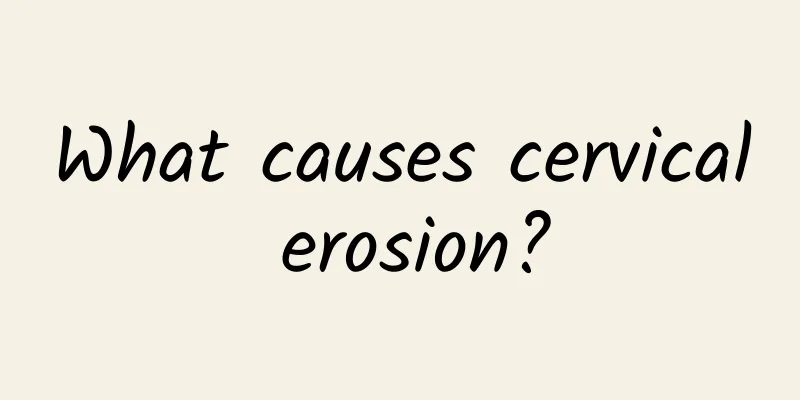What causes cervical erosion?

|
Cervical erosion usually refers to ectopic columnar epithelium of the cervix. Since the columnar epithelium is thin, the underlying stroma is red and appears eroded, but it is not the true erosion of epithelial shedding and ulceration referred to in pathology. Therefore, the term cervical erosion was officially cancelled in the textbook "Obstetrics and Gynecology" published in 2008. Ectopic columnar epithelium of the cervix is usually caused by the effect of estrogen. The columnar epithelium at the inner opening of the cervix canal moves outward to the outer opening of the cervix canal. It is a common physiological phenomenon. Cervical columnar epithelial ectopia rarely occurs before puberty because the ovarian function is not yet complete and the estrogen level is low. Cervical columnar epithelial ectopia may cause an increase in vaginal discharge, which is sticky or purulent, sometimes with a fishy smell. Sometimes there will be blood in the vaginal discharge, and there may even be bleeding during sexual intercourse. With age, especially after menopause, women's estrogen levels decrease, and the columnar epithelium begins to retreat inward and the symptoms disappear. Cervical columnar epithelial ectopia rarely occurs before puberty because the ovarian function is not yet complete and the estrogen level is low. Cervical columnar epithelial ectopia may cause an increase in vaginal discharge, which is sticky or purulent, sometimes with a fishy smell. Sometimes there will be blood in the vaginal discharge, and there may even be bleeding during sexual intercourse. With age, especially after menopause, women's estrogen levels decrease, and the columnar epithelium begins to retreat inward and the symptoms disappear. Although cervical columnar epithelial ectopia is a physiological phenomenon, if the erosion appearance is serious or accompanied by symptoms such as excessive vaginal discharge, low back pain, and bleeding after intercourse, it is recommended to seek medical treatment in time. The treatment method depends on the specific condition. For mild cervical columnar epithelial ectopia, drug treatment can be considered, such as progesterone suppositories, potassium permanganate solution sitz baths, etc. For moderate and severe cervical columnar epithelial ectopia, physical therapy can be considered, such as laser therapy, cryotherapy, infrared coagulation therapy, etc. For patients with cervical hypertrophy, a wide range of lesions, and atypical hyperplasia, surgical treatment can be considered, such as cervical conization, Leep knife loop electrosurgical resection, etc. |
<<: What is pelvic effusion? Is it serious?
>>: What to eat for vaginal candidal infection
Recommend
What fruits can women eat to relieve dysmenorrhea
Dysmenorrhea, almost every woman has experienced ...
What are the specific causes of ovarian cysts in women?
The occurrence of ovarian cysts has a certain imp...
How much does it cost to perform an abortion?
With the liberalization of sex life, more and mor...
Get rid of fat thigh meat and lift your buttocks with 5 elastic bands
Girls' fat thighs will be exposed as soon as ...
Can I eat red dates if I have gastritis?
Patients with gastritis can eat red dates in mode...
What's wrong with early menstruation at 47?
What's wrong with early menstruation at 47? M...
Detailed explanation of the symptoms of bacterial vaginosis
Nowadays, women are prone to bacterial vaginosis ...
What is the reason for frequent bleeding after menopause?
Frequent bleeding after menopause may be related ...
How many days after miscarriage can you wash your hair? You will know after reading this
In order to stay beautiful, most women wash their...
Can pelvic inflammatory disease cause excessive pelvic fluid accumulation?
We all know that pelvic effusion is closely relat...
How to treat elderly patients with vaginitis? Prevention methods of vaginitis
Senile vaginitis refers to vaginitis in postmenop...
How much does it cost to cure cervical erosion?
How much does it cost to cure cervical erosion? T...
8 weight loss exercises to get rid of fat and give you an S curve
[Core Tip]: What kind of exercise can you do to l...
Infants aged 4 to 6 months can eat complementary foods to avoid iron and calcium deficiency
The issue of breastfeeding and complementary food...
What to do if your cervix is enlarged and has a chocolate cyst
If cervical hypertrophy and chocolate cysts affec...









